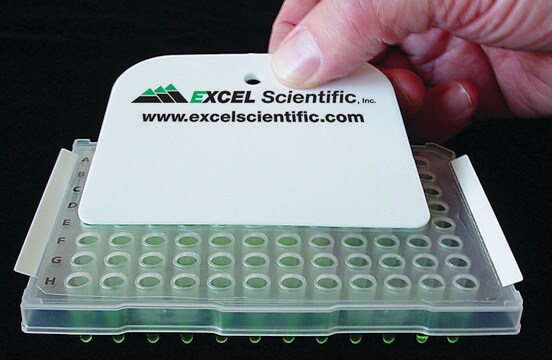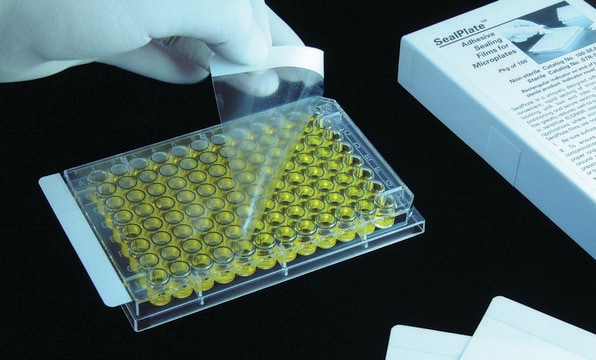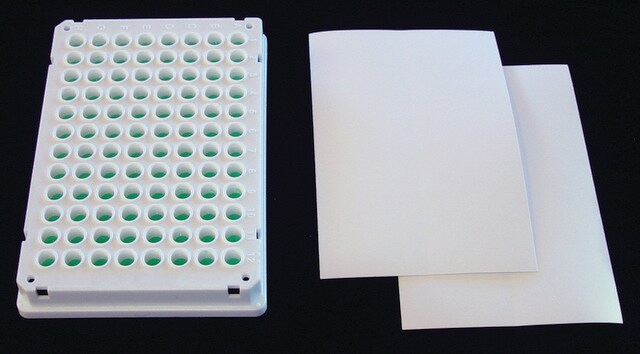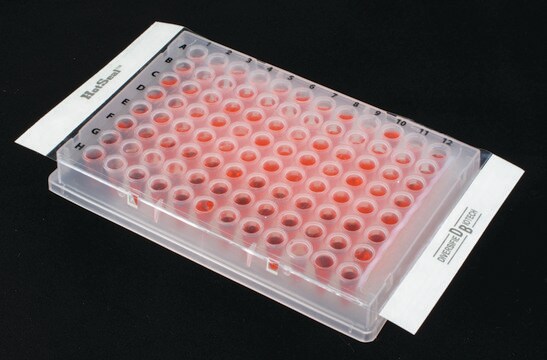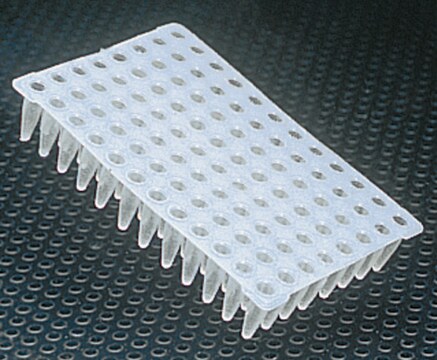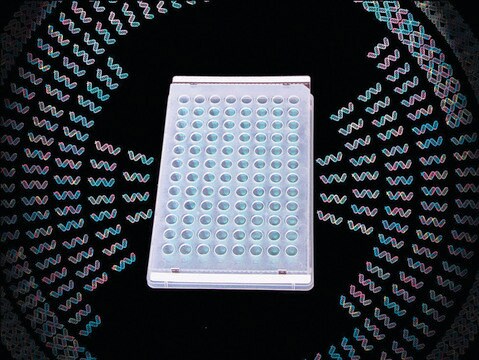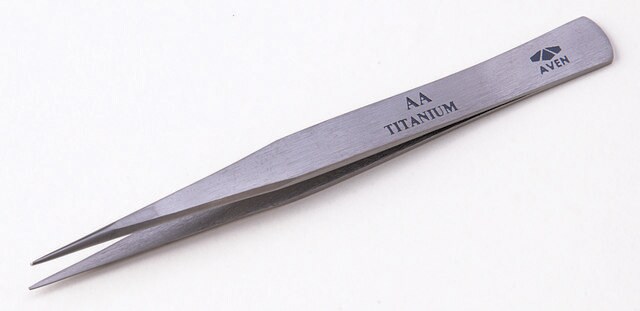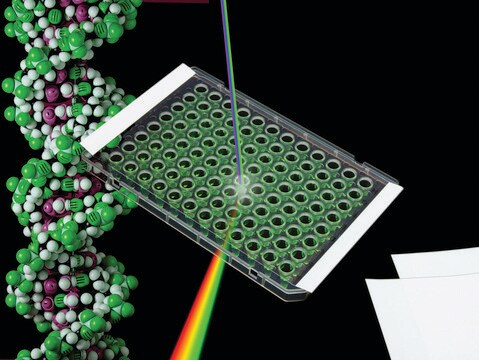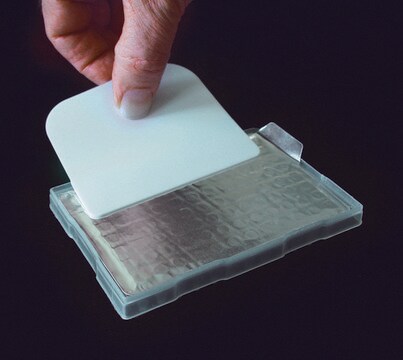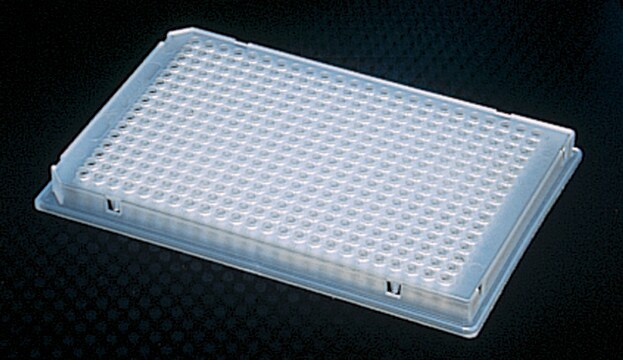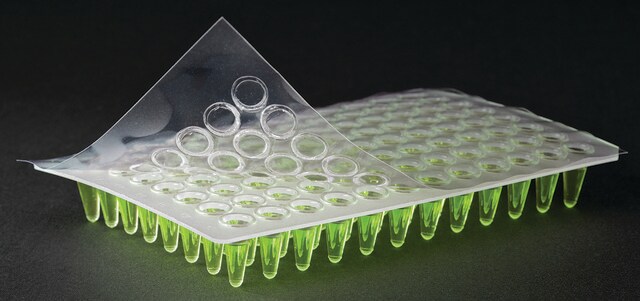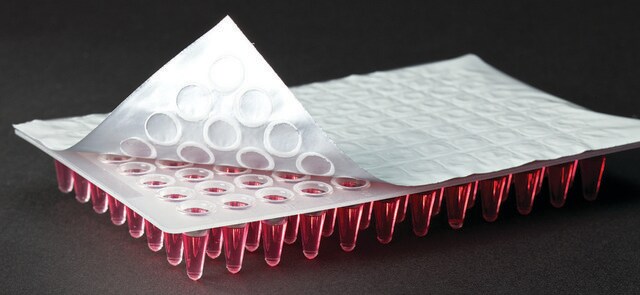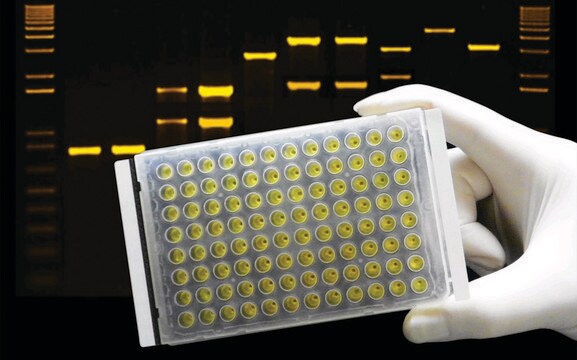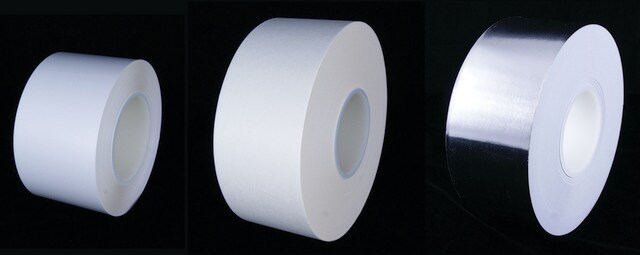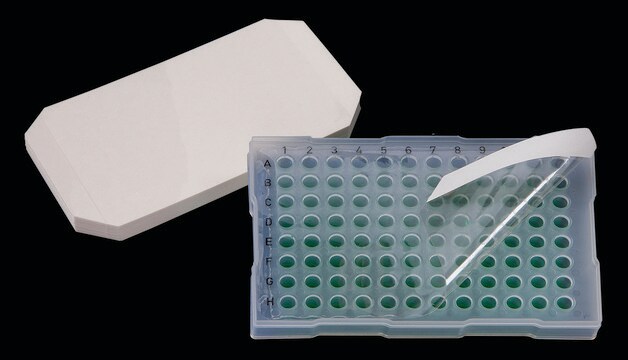Z734438
ThermalSeal RTS™ Sealing Films
for qPCR, storage & crystallization, non-sterile
Sinónimos:
qPCR plate seal, storage plate seal
About This Item
Productos recomendados
material
polyolefin film
silicone/adhesive
sterility
non-sterile
packaging
pack of 100 ea
manufacturer/tradename
Excel Scientific TSS-RTQ-100
technique(s)
PCR: suitable
qPCR: suitable
L × W
76.2 mm × 133.4 mm
W × L
7.62 cm × 13.34 cm
color
clear
¿Está buscando productos similares? Visita Guía de comparación de productos
General description
- High optical clarity
- Minimal to no autofluorescence
- Chemically inert; no extractables except at extreme pH
- DMSO resistant for HTS
- Heat resistant, recommended for temperatures from
- -70°C to +100°C
- Certified DNase, RNase, and Nucleic Acid free
- Fit within raised plate rim to prevent loss of seal due to film lifting
- Silicone adhesive forms the strongest available seal for evaporation prevention
- Non-tacky adhesive layer simplifies handling of film prior to sealing
ThermalSeal RTS™ films are sized to fit within the edges of raised-rim 96-well plates. Their consistent high optical clarity makes possible reproducible, reliable, and consistent DNA amplification measurements and crystal detection. Two end tabs assist in positioning the film on the plate, and the non-tacky adhesive surface simplifies handling. Easy removal of the end tabs at perforated boundaries prevents lifting and higher evaporation rates that can occur with films that overlap the plate rim.
Dimensions 76.2 by 133.4 mm. With end tabs removed, length is 113.0 mm.
- High optical clarity
- Minimal to no autofluorescence
- Chemically inert; no extractables except at extreme pH
- DMSO resistant for HTS
- Heat resistant, recommended for temperatures from
- -70°C to +100°C
- Certified DNase, RNase, and Nucleic Acid free
- Fit within raised plate rim to prevent loss of seal due to film lifting
- Silicone adhesive forms the strongest available seal for evaporation prevention
- Non-tacky adhesive layer simplifies handling of film prior to sealing
Legal Information
Elija entre una de las versiones más recientes:
Certificados de análisis (COA)
¿No ve la versión correcta?
Si necesita una versión concreta, puede buscar un certificado específico por el número de lote.
¿Ya tiene este producto?
Encuentre la documentación para los productos que ha comprado recientemente en la Biblioteca de documentos.
Los clientes también vieron
Protocolos
The most common application for qPCR is the measurement of a gene transcript or copy number quantity relative to one or more reference genes using probe detection.
Primer Concentration Optimization Protocol is an approach to create a matrix of reactions. This is used to test a range of concentrations for each primer against different concentrations of the partner primer.
reverse transcription is the analysis of gene expression to measure concentration mrna a gene. there are several challenges such analyses, as differences in halflife between different transcripts, temporal patterns and lack correlation protein.
Although quantitative PCR uses the same basic concept as traditional PCR, the reactions differ in that the amplicons are generally smaller and are detected indirectly using an additional dye or labeled probe or primer.
Nuestro equipo de científicos tiene experiencia en todas las áreas de investigación: Ciencias de la vida, Ciencia de los materiales, Síntesis química, Cromatografía, Analítica y muchas otras.
Póngase en contacto con el Servicio técnico